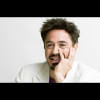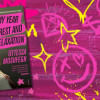The Conjuring 3: What the Devil Really Made Them Do

The horror scene in early 2000s Hollywood was largely dominated by the Saw franchise (2004), the Grudge trilogy (2004) and the Paranormal Activity film series (2007), movies whose plots got watered down with every successive release. Apart from the aforementioned films, there were also Eli Roth's Cabin Fever (2002) and Hostel (2005) at the forefront, rounding up horror blockbusters for that decade.
When The Conjuring (2013) arrived in theatres post-2010, I figured that it'd fizzle out quickly as a standalone horror, much like The Ruins (2008) and The Others (2001). But James Wan's vision persevered, proving me wrong on many fronts, with the compelling narrative, intense worldbuilding, and the tenderness in storytelling which primarily focused on a traumatised family scared out of their wits on cursed grounds. The second instalment in what is now known as the Conjuring film franchise, skilfully undid the damage done by the 80s and 90s films centered on the Amityville Haunting incident, through an approximately 6-minute-long opening sequence. We do not speak of the disaster that was the early-2000s remake starring Ryan Reynolds.
So, you can imagine the kind of expectations I had, going into the franchise's latest release chronicling yet another incident of haunting straight from the Warrens' real-life case files.
Little did I know that I was signing up for a 105-minute-long exercise in disappointment.
As a horror movie buff, I was at the edge of my seat right after the trailer premiered online. The premise had already had me hooked. The wait came to an end shortly after a month. Watching the opening sequence of the film unfold on my laptop screen, I knew, right off the bat, that something about the film was off. This Conjuring instalment didn't promise the franchise's classic haunted house setting in the premise, but took a rather different route with the introduction of a highly-publicised murder trial in the central narrative.

This out-of-the-box move did not work in the movie's favour, as the subject matter was handled in a rather insensitive, and often ludicrous, manner. The necessary social commentary on the American justice system and the 80s' "Satanic cult hysteria" was nowhere to be found. Instead of following or improving on the precedents set by director James Wan in the first two films featuring the Warrens, this instalment poorly attempted to break new ground by relying less on meaningful storytelling, and more on quick cuts of demonic apparitions on screen, leading to relatively tame incidents of urban haunting. Ultimately, the performances of the stellar cast were barely enough to keep the movie afloat. Vera Farmiga and Patrick Wilson, essaying the roles of a married demonologist couple with kids, have always lent the movies a welcome sense of wholesomeness which kept the films from appearing too one-sided in their portrayal of horror. The actors didn't disappoint in this film either, alongside the brilliantly layered performance given by Irish actor Ruairi O'Connor as a morally-conflicted and haunted young adult.
Part of me is happy to see the Conjuring films expand into a blockbuster franchise that is breathing new life into quality horror in cinema, with the grounded stories they're bringing to the silver screen. But, over time, that fascination has somewhat dissipated, owing to the dissatisfaction delivered by the franchise's more unsavoury instalments: Annabelle (2014), The Nun (2018) and The Curse of La Llorona (2019). All three films were of little substance, stuffed silly with jump scares and hovering indecisively over an uneven mix of folklore and mystery.
They were doling out intriguing premises without an intriguing narrative to follow. It is here that cracks emerged in The Conjuring's legacy. The story of the Perron family terrorised by the bloodthirsty spirit of a deranged witch left the audience wanting more, but the film studios behind the franchise did little to ensure that those wants were fulfilled. In a time when indie and experimental horror filmmakers Ari Aster and Robert Eggers are reinventing the horror genre on the silver screen, the Conjuring franchise is slowly slipping back to the conventional horror movie format guaranteed to generate cult classics rather than actually enjoyable films. There's only so much that excellent casting and set-design can do to salvage a poorly-made film, let alone an entire legacy spawned by one.
Final thoughts: I can't tell if the devil really did drive Arne Cheyenne Jackson to murder his landlord, but it seems that some sort of devilry has definitely possessed the crew and production team behind the Conjuring franchise to continue churning out the end products of lazy screenwriting and insincere film direction.
Rasha Jameel is your neighbourhood feminist-apu-who-writes-big-essays. Remind her to also finish writing her bioinformatics research paper at [email protected]

 For all latest news, follow The Daily Star's Google News channel.
For all latest news, follow The Daily Star's Google News channel. 








Comments